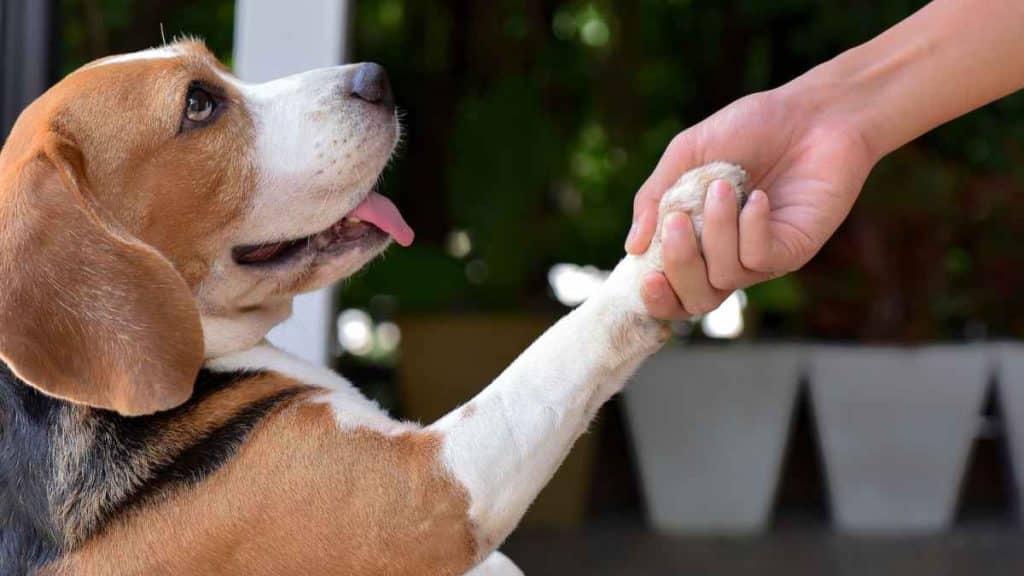Dog training is a crucial aspect of responsible dog ownership. It involves teaching your dog how to behave appropriately in different situations and developing a strong bond between you and your furry friend. The way you train your dog can make a huge difference in their behavior and overall quality of life. Positive reinforcement is a widely accepted and effective method of dog training that encourages good behavior and reinforces it with rewards. In this blog post, we’ll discuss the basics of dog training and the importance of positive reinforcement.
Understanding Dog Behavior
Before starting any dog training program, it’s important to understand the basics of dog behavior. Dogs communicate through body language and cues, and it’s essential to recognize these cues to understand your dog’s needs and emotions. For example, a wagging tail doesn’t always mean a happy dog, and growling can sometimes be a sign of fear or anxiety. Understanding these cues can help you communicate better with your dog and build a stronger bond.
Positive Reinforcement Training
Positive reinforcement is a dog training method that rewards good behavior with treats, praise, or other incentives. This method is based on the idea that dogs learn better through positive reinforcement rather than punishment or fear-based training. Positive reinforcement has been proven to be more effective, humane, and long-lasting than other dog training methods.
Benefits of Positive Reinforcement
The benefits of positive reinforcement training are numerous and include the following:
- Establishing Trust And Building A Stronger Bond – Positive reinforcement helps to establish trust between you and your dog and build a stronger bond. When your dog realizes that good behavior is rewarded with treats, praise, or other incentives, it will be more likely to trust and respect you.
- More Effective Than Punishment-Based Training – It has been proven to be more effective than punishment-based training. It helps to increase the likelihood of your dog repeating good behaviors and reduces the occurrence of negative behaviors.
- Encourages Good Behavior – This encourages good behavior in your dog. When your dog realizes that good behavior is rewarded, it will be more likely to repeat it.
- Provides A Humane Approach – Positive reinforcement is a humane approach to dog training. It does not involve physical punishment or negative reinforcement, which can be harmful and cause fear or aggression in dogs.
- Creates A Positive Learning Environment – This training creates a positive learning environment for your dog. When your dog is rewarded for good behavior, they are more likely to enjoy the training process and become more engaged in learning.
- Reduces Stress And Anxiety – Positive reinforcement can reduce stress and anxiety in dogs. When your dog is trained using positive reinforcement, they are less likely to experience fear, stress, or anxiety, which can be harmful to its overall well-being.
- Builds Confidence – It helps to build your dog’s confidence. When your dog is rewarded for good behavior, they feel more confident and self-assured, which can lead to better behavior and overall happiness.
There are several techniques for positive reinforcement training that you can use to train your dog. These include clicker training, shaping, and luring. Clicker training involves using a clicker to mark a desired behavior, followed by a treat as a reward. Shaping involves gradually shaping a behavior until it meets the desired result while luring involves using a treat to encourage a dog to perform a certain behavior.
Training Basics
Before starting any training program, it’s important to set up a training environment that is conducive to learning. This involves eliminating distractions and ensuring that your dog is comfortable and focused. Basic commands like sit, stay, come, and leave it are essential for every dog to learn. These commands help to keep your dog safe and well-behaved in different situations.
Dog Leash Training
Leash training is an essential part of dog training, especially if you plan on taking your dog for walks or to public places. The best dog training methods for leash training involve using positive reinforcement techniques. This can include rewarding your dog for walking beside you, and stopping or changing direction when they pull on the leash.
Dog Potty Training
It’s important to start potty training as early as possible to establish good habits. Consistency is key when it comes to potty training, and positive reinforcement can be used to reward your dog for going potty outside.
Behavioral Issues
This can arise in any dog, and it’s recommended to address these issues as soon as possible to prevent them from escalating. Common behavioral issues include barking, chewing, digging, and jumping. Positive reinforcement training can be used to address these issues by rewarding good behavior and ignoring bad behavior. Identify the underlying cause of the behavior, which can include anxiety, boredom, or lack of exercise.
Preventing Future Behavioral Issues
This involves providing your dog with enough exercise, mental stimulation, and socialization. Dogs that are well-exercised and well-socialized are less likely to develop behavioral issues. Additionally, providing your dog with plenty of toys and puzzles can help keep them mentally stimulated and prevent boredom.
Dog training is an essential aspect of responsible dog ownership. Positive reinforcement is the best dog training method, as it encourages good behavior and builds a strong bond between you and your dog. Understanding your dog’s behavior and using consistent dog training techniques can help prevent behavioral issues and establish good habits. By providing your dog with enough exercise, mental stimulation, and socialization, you can help prevent future behavioral issues and develop a happy and healthy relationship with your furry friend.
Angela Spearman is a journalist at EzineMark who enjoys writing about the latest trending technology and business news.
